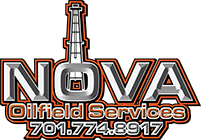Finding the right equipment for your oilfield project can make a big difference. Each project has its own needs, and choosing the right gear helps ensure everything goes smoothly. Assessing the project scope, timeline, and location is vital. This helps identify what equipment is best suited to meet your goals. Some tasks might need only basic tools, while others require specialized machinery that boosts efficiency.
Adapting to safety and compliance standards is also critical. Equipment must meet these standards to protect workers and ensure the integrity of the operations. Making sure your gear aligns with industry regulations helps avoid accidents and keeps the project on track.
Alongside safety, consider cost-effectiveness. Renting equipment instead of buying can save money, offering flexibility to cater to changing project needs. This way, you have access to the right tools without a huge financial commitment, allowing you to focus on delivering a successful project.
Understand Your Project Needs
Choosing the right oilfield gear starts with understanding your project’s specific requirements. Every project is different, and selecting gear involves looking at several factors, such as scope, timeline, and environment. Taking the time to properly assess these needs ensures you select the most effective equipment for the job.
Consider the project scope first. Determine the type of work being done and the necessary scale of operations. Knowing the particular tasks planned helps identify the most suitable equipment and prevents unnecessary rentals or purchases.
Timelines are also crucial. Short-term projects might require different equipment compared to long-term ones. Quick jobs often benefit from flexible equipment solutions that adapt to immediate needs, whereas extended projects might demand more durable and versatile equipment.
The environment plays a significant role as well. Harsh weather or challenging landscapes might require specialized equipment. Machines should be able to handle adverse conditions reliably and efficiently.
Different oilfield projects require specific tools. Drilling projects, for example, need drilling rigs and support vehicles, whereas maintenance-focused projects might center around inspection tools. By understanding these elements, you can ensure that your project is equipped with the right gear.
Essential Oilfield Equipment Options
Equipping an oilfield project effectively involves knowing which tools and machinery are essential. This understanding helps make operations smoother and more productive. Here is a list of basic equipment commonly needed for oilfield tasks:
1. Drilling Rigs – Essential for any boring operations, drilling rigs are crucial for accessing underground resources.
2. Support Vehicles – Trucks and trailers transport equipment and materials to remote sites.
3. Storage Tanks – These hold oil, water, and other fluids until they are processed or transported.
4. Pumps and Compressors – Vital for managing fluid flow and pressure in various operations.
5. Safety Equipment – Includes items like helmets, protective clothing, and fire extinguishers to ensure worker safety.
Specialized equipment can greatly improve efficiency on the job. For example, hydraulic fracturing units aid in the extraction process, while blowout preventers ensure safety during drilling.
Using the correct tools not only helps in executing tasks effectively but also minimizes downtime and enhances safety. Identifying and employing essential and specialized equipment is key to a successful project, making sure every aspect of the job is covered with the right resources.
Evaluate Safety and Compliance Standards
Safety and compliance in oilfield operations are non-negotiable. Ensuring your equipment meets industry standards is critical to protecting workers and avoiding costly fines. Adhering to safety regulations supports efficient operations and helps maintain a positive reputation.
To start, verify that all equipment is certified and regularly inspected. This ensures that machines function safely and reduces the risk of accidents. Equipment should align with standards set by regulatory bodies like OSHA, which cover aspects such as machinery safety, personal protective equipment (PPE), and emergency procedures.
Choosing gear that complies with these standards offers several benefits. It strengthens worker confidence by providing a safe job environment. Workers can focus on their tasks without worrying about equipment failures or hazards. Maintaining high safety standards also minimizes downtime caused by accidents or equipment malfunctions.
Conducting regular training sessions on equipment usage and safety keeps workers informed and competent. Updated knowledge on safety practices ensures that teams can handle equipment correctly, which further reduces risks. Prioritizing safety and compliance not only protects people but also helps in maintaining smooth and uninterrupted operations.
Consider Cost-Effectiveness and Flexibility
Cost is always a major consideration when choosing oilfield equipment. Carefully evaluating the options between renting and buying can lead to significant savings while maintaining flexibility. Each method has its benefits, depending on the project’s needs and budget constraints.
Renting equipment often proves more cost-effective, especially for short-term or fluctuating projects. It eliminates the need for large upfront investments and reduces maintenance costs. Renting also offers access to the latest equipment, which can be a significant advantage for modernizing operations.
Rentals provide the flexibility to adjust to project demands. Companies can scale up or down based on the workload, making it easy to manage resources more effectively. This flexibility ensures you have the right equipment when you need it without overcommitting financially.
Another advantage is the manageable maintenance responsibilities. Rental agreements often cover maintenance services, meaning less stress over potential breakdowns. Your team can focus on the job without worrying about upkeep.
Conclusion
Choosing the right oilfield gear involves careful consideration of project needs, safety standards, and financial strategies. By understanding the specific requirements of your project, you can select equipment that maximizes efficiency while maintaining a safe working environment. Renting provides a flexible and cost-effective solution for meeting these goals.
If you’re ready to equip your oilfield project with the best gear, look no further than Nova Oilfield Services. Our comprehensive oil field equipment rental options, expert advice, and commitment to safety ensure you have everything you need. Contact us today to learn how we can support your operations effectively and affordably.








